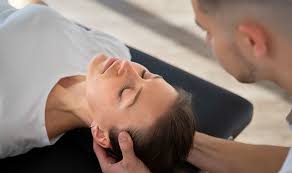Most of us have felt dizzy at some point in our lives, whether it was from standing up too quickly or spinning around too quickly. But dizziness is more than just a one-time inconvenience for people with vestibular disorders; it’s a daily occurrence that can have a big impact on their quality of life. This blog post will provide helpful insights from therapy as we examine the causes, symptoms, and treatments of vestibular disorders—a complex and frequently misunderstood field.
Understanding Vestibular Disorders:
The vestibular system, nestled within the inner ear, serves as our body’s internal compass, helping us maintain balance, stability, and spatial orientation. Problems with this complex system can result in a variety of vestibular disorders, each with unique challenges. The delicate equilibrium that controls our sense of balance can be upset by a variety of disorders, including inner ear infections, head trauma, aging, and underlying medical conditions.
Types of Vestibular Disorders:
There are many different kinds of vestibular disorders, and each one has its own set of symptoms and signs. One of the most common vestibular disorders is benign paroxysmal positional vertigo (BPPV), which is characterized by brief but severe episodes of vertigo brought on by head position changes. On the other hand, the symptoms of Meniere’s disease include hearing loss, tinnitus, and a feeling of fullness in the ears in addition to recurrent episodes of vertigo. Other common vestibular disorders that each have their own distinct challenges and symptoms are vestibular migraine, labyrinthitis, and vestibular neuritis.
Vestibular Disorder Symptoms:
The nature and severity of vestibular disorders’ symptoms can differ greatly, ranging from mild and sporadic to severe and incapacitating. Among other symptoms, vestibular disorders can cause dizziness, nausea, vertigo (a spinning sensation), imbalance, lightheadedness, and visual disturbances. These symptoms can have a big impact on day-to-day activities, making it harder to move around, work, and interact with people. They can also make you feel frustrated and alone.
The Function of Therapy in the Management of Vestibular Disorders:
Therapy is essential in the treatment of vestibular disorders because it provides a means of symptom relief, improved function, and improved quality of life for patients. Individuals with vestibular disorders require a specific type of physical therapy, which is called vestibular rehabilitation therapy (VRT). Virtual Retraining Therapy (VRT) attempts to improve balance, lessen symptoms, and improve overall function by encouraging adaptation and compensation within the vestibular system.
Therapy-Related Insights:
One of the most important lessons learned from therapy is the value of individualized treatment regimens that are catered to the unique requirements and symptoms of each patient. An expert vestibular therapist will carry out a comprehensive assessment to evaluate the person’s balance, gait, posture, and vestibular function. They will pinpoint areas of impairment and create focused interventions to effectively address them.
VRT usually includes a wide range of exercises and methods designed to improve stability, balance, and gaze stabilization. Exercises to strengthen core muscles and improve stability, exercises to desensitize the vestibular system to motion stimuli, exercises to improve visual focus during head movements, and canalith repositioning maneuvers to relieve BPPV symptoms are a few examples.
Therapy has also taught us how important it is to be consistent and persistent in order to get the results you want. Vestibular therapy for vertigo is a process that takes time and requires the individual to be committed, patient, and dedicated. People can gradually improve their balance and function by following a regimented exercise program and gradually pushing themselves to the limit of their comfort.
Additionally, counseling is a great way to educate and support patients and their families by giving them the knowledge and coping mechanisms they need to manage vestibular symptoms. This could include advice on how to avoid falls, changes to one’s lifestyle to reduce triggers, and useful coping mechanisms for moments of vertigo and dizziness.
In summary, although navigating the confusing world of vestibular disorders can be difficult, people can find support, hope, and empowerment in therapy and on their path to improved function and balance. People can take charge of their symptoms and regain their independence by comprehending the underlying causes, identifying the symptoms, and embracing customized vestibular therapy interventions. People with vestibular disorders can overcome challenges, regain their equilibrium, and confidently navigate the world once more with the help of skilled therapists and a dedication to continued treatment.

